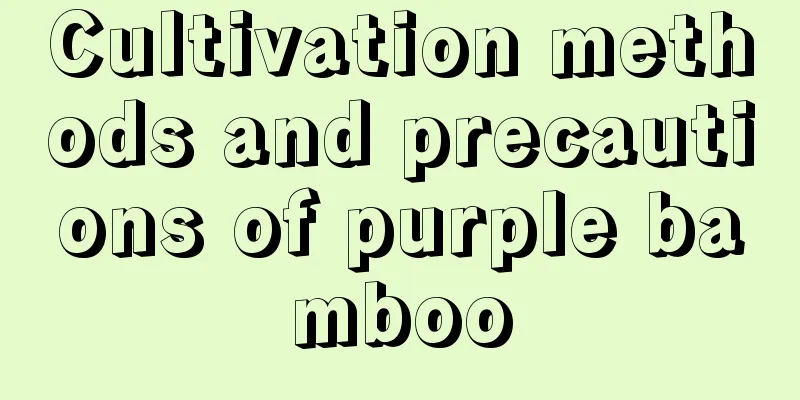Breeding methods and precautions of silver longevity

1. Maintenance methods1. Temperature: It is best to keep the temperature between 15 and 28 degrees. Too high or too low will cause harm to it and sometimes even threaten its health. Therefore, try to keep the temperature below 30 degrees in summer and above 10 degrees in winter. 2. Light: It has high requirements for sunlight. A too dark environment will cause it to grow too tall and the leaves will appear wilted. However, strong sunlight should also be avoided. Generally speaking, you can provide diffuse light in spring and autumn, and place it in a cool place in summer. In winter, full sunlight is generally available. 3. Watering: It is very afraid of waterlogging, and it cannot be very dry for a long time. The substrate can be kept moist in spring and autumn, and sprayed with water while watering in summer. In winter, try to keep it a little drier, but don't not water it at all if the temperature is suitable. 4. Fertilization: First of all, base fertilizer is very important. The next thing is top dressing, which can only be used in spring and autumn, usually once or twice a month. 2. Breeding techniques1. Reproduction: It can be propagated by leaf cuttings, which is a method of using its strong leaves as materials for reproduction. This method can be used in spring and autumn. In addition to choosing the right leaves, you also need a good substrate. When inserting, also pay attention to the depth. The next step is to keep the temperature and humidity suitable and block out the strong light. 2. Repotting: For such succulents, it is best to change the soil once a year. Generally speaking, flower pots do not need to be replaced unless the plants grow very vigorously and there is insufficient space, then they need to be replaced. When repotting, try not to damage the taproot, but rotten roots can be cut off. 3. Problem diagnosis and treatment1. Disease: Excessive watering can cause "root rot", which is more likely to occur when the humidity is very high. Generally speaking, the use of carbendazim and oxadiazine is more effective. In addition, it is best to take measures such as pruning rotten roots. 2. Pests: Incorrect breeding methods can also lead to pests and diseases. For example, "scale insects" and "red spiders" are two very common types. They can be controlled with pesticides such as omethoate. IV. Other issues1. Toxicity: It is a non-toxic succulent and will not cause any harm to the human body. 2. Can it be grown at home? It is very suitable. Almost all succulents are good for viewing at home. |
<<: Cultivation methods and precautions of white flower Lycoris
>>: Cultivation methods and precautions of blood-replenishing grass
Recommend
The difference between Pyrus duli and Pyrus duli
1. Tree shape difference Pear is a tree with a he...
The difference between chrysanthemum and chrysanthemum
1. Leaf Difference The leaves of Chrysanthemum ar...
When is the best time to take cuttings of green radish? Which month is the best time for cuttings to take root?
Time for cuttings of green radish The green radis...
Can crabapple be eaten? How to eat crabapple
1. Can crabapple be eaten? Crabapple fruit is edi...
When is the best time to repot the fuchsia and what should be paid attention to when repotting
Time to repot fuchsia Fuchsia needs to be repotte...
What are the methods for propagating bayberry and which method is commonly used
1. What are the breeding methods? 1. Seed propaga...
Do lemon potted plants have fragrance? How to grow lemon seeds in small potted plants
1. Do lemon potted plants have fragrance? It does...
Breeding methods and precautions of Belgian azalea
1. Breeding methods 1. Soil: You should choose so...
Cuttings of Purple-Leafed Dwarf Cherry
Cutting medium Before selecting cuttings, the cut...
How to grow onions
1. Maintenance methods 1. Temperature: It has a v...
Is hibiscus edible?
Hibiscus Nutrition Hibiscus flowers are sweet and...
It is better to water the banyan tree every few days.
How often should I water the banyan tree? Banyan ...
What is the best month to plant peach trees? When is the best time to plant peach trees?
What month is suitable for planting peach trees? ...
The color of jasmine
The color of jasmine Jasmine is white and has a s...
The flower language and legend of oleander
Flower Language Oleander has beautiful flowers th...









